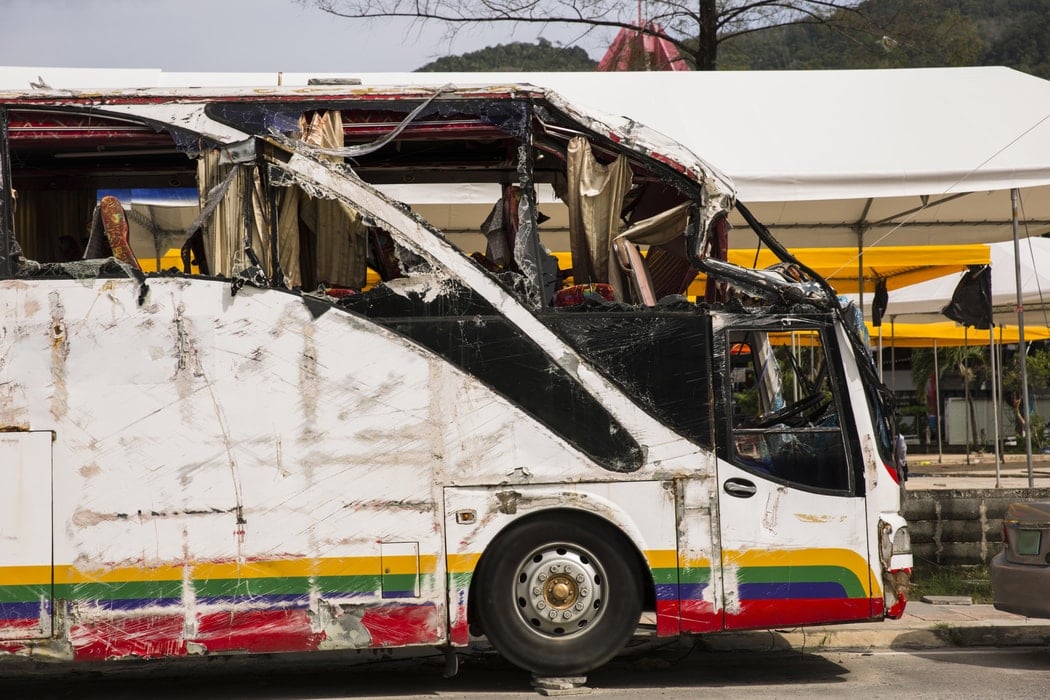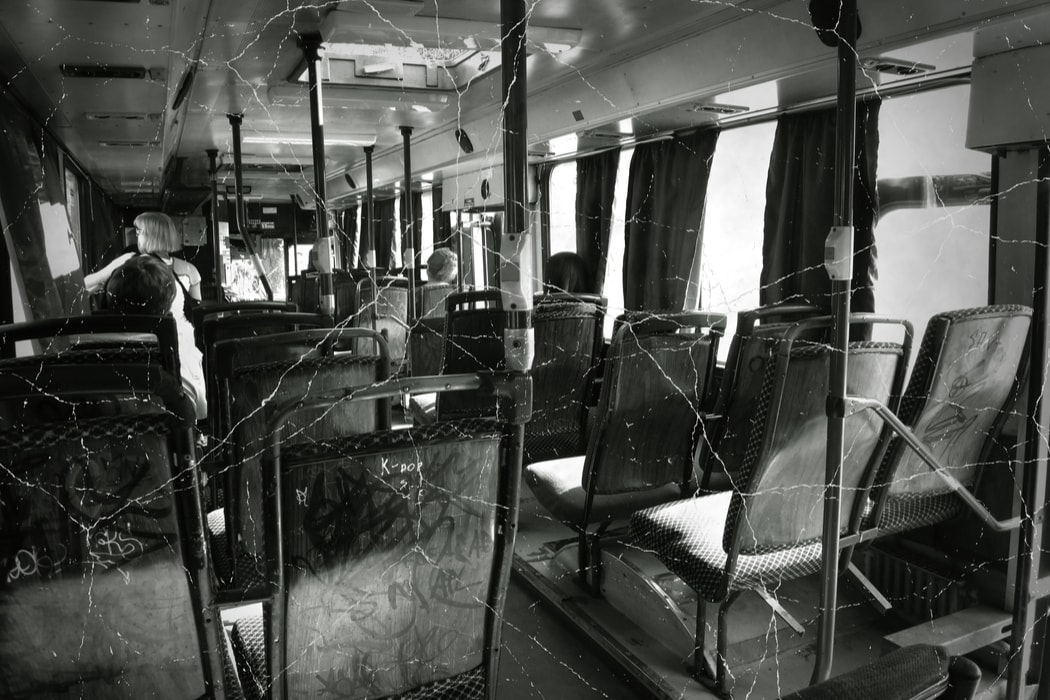
Imagine this: you’re taking a ride via a New Mexico Department of Transportation public bus or train heading to your destination when something goes wrong and you find yourself injured. Would you know what to do next? In this safety guide, our New Mexico public transit injury lawyers provide steps to take and legal options explore so that you can get the settlement you deserve for pain and suffering, and other related damages.
Why New Mexico Public Transit Injuries Occur
Sadly, injuries suffered while riding on New Mexico public transportation are quite common. Here are two examples that explain why public transit injuries occur and your potential legal recourse:
Example 1: Another driver slams into the bus or train you are riding on. In this scenario it is possible to pursue litigation against that driver for failing to provide due care to others in his or her vicinity. This failure to provide due care is another way of referring to negligence. Everything from driving while intoxicated to failing to drive in accordance with traffic signals, speeding, insufficient vehicle maintenance, and drifting off while operating a vehicle qualifies as negligence.
Example 2: A mass transit owner, operator, or group failed to properly maintain a bus or train. This negligence shows a lack of reasonable care to prevent an accident and protect passengers. Victims can sue the driver of the transit vehicle as well as others who contributed to the accident for negligence for pain, suffering, lost wages, and other related costs.
How to Proceed After Suffering an Injury While Riding Public Transportation
From concussions to twisted ankles, whiplash and beyond, all sorts of injuries can occur on public transportation. Depending on the severity of injuries, there are several forms of legal recourse for accident victims. For example, it might be possible to file a successful personal injury lawsuit against any other party that caused the accident.
Injured Parties Must Mitigate Damages
The first step to take following an injury on public transportation is to have your wound, break, dislocation, or other form of pain tended to by medical professionals. This is key as you have a duty to mitigate damages following the accident. This duty is another means of stating you must avoid actions that might cause further injury.
The duty to mitigate also means you have to obtain care for your injuries. You must obtain this medical treatment within a reasonable amount of time. If you fail to mitigate your injuries, you might be precluded from pursuing financial compensation.
Furthermore, the failure to mitigate injuries has the potential to cap the amount of money you are eligible to receive.
After you’ve addressed any immediate health concerns, contact a New Mexico injury attorney specializing in auto accidents for a free consultation.
The Many Forms of Negligence That Can Cause Injuries on Public Transportation
As noted above, entities responsible for maintaining buses, trains, and other modes of public transportation can be guilty of negligence if their failure to provide due care caused an accident and subsequent injury. However, this is not the only form of negligence that can lead to a lucrative personal injury lawsuit.
If a smartphone, tablet, radio, or anything else distracts the vehicle operator at the time of the accident, or prior to the accident, he or she can be subject to a negligence charge. As long as your attorney can prove a party involved in the accident failed to provide due care, you can obtain significant compensation. This compensation is meant to offset the cost of your related medical expenses, lost time at work, disability, pain and suffering.
Furthermore, operator error or the violation of a prohibited practice also provides solid legal footing for a personal injury lawsuit. Our legal team is here to evaluate the nuances of your accident and craft the best possible legal strategy. We will guide you through each stage of this complicated process. If several people suffer injuries in the accident, you might be a part of a class action lawsuit.
Our New Mexico bus accident lawyers and train accident attorneys will explain the nuances of this group lawsuit, break down the legal process in layman’s terms, and do everything in our power to obtain the compensation you need to return your life to a semblance of normalcy.
Criminal Actions
Aside from mass transit operator and owner negligence, there are numerous other causes of mass transit accidents and injuries. Even the failure to hire security guards, install cameras for surveillance and perform background checks on all personnel can provide grounds for a personal injury lawsuit following a criminal act that led to a physical injury and/or mental trauma.

Slips and Falls
In some cases, passengers slip and fall while riding public transportation. Although rain, sleet, and other inclement conditions can cause accidents, the owners and operators of mass transit vehicles can sometimes be guilty of failing to provide a safe space for travel. Specific mechanisms must be in place to reduce the chances of a slip and fall.
As an example, mass transit operators are under a legal obligation to remove ice and excessive moisture from points of entry and exit. Personnel must clean up areas of standing water and other pooled fluids. Furthermore, if bad weather makes public transportation dangerous, services should temporarily come to a halt until conditions improve.
The Clock Is Ticking
If you suffer injuries while riding mass transit, a taxi, or any other transportation service, do not assume you can file a personal injury lawsuit at just any point in the future! If the statute of limitations expires, you will forfeit your right to file a personal injury lawsuit. In general, the statute of limitations for personal injuries in the state of New Mexico is three years.
However, this window can be as short as a month or two months depending on the nuances of the case. This is precisely why you should contact our auto injury lawyer immediately after the accident.
Even if you do not feel pain immediately following the mass transit accident, it is still in your best interest to reach out to our legal team. It might take several days or even a couple weeks for your symptoms to manifest. If you feel even the slightest bit of soreness, anxiety, or fear following the public transportation accident, reach out to us right away so we can perform a thorough review of your case.
The Role of the Tort Claims Act
State government is responsible for some forms of public transportation. As an example, the city of Albuquerque provides some bus services and other forms of public transportation. Local school districts own buses that transport kids to and from school. Airports are under the management of local government personnel. If you are injured while traveling on any of these forms of transportation, your injury claim against the entity in question will be subjected to the aforementioned Tort Claims Act.
The filing of an injury claim under this Act is not the same as filing a claim against a business or a citizen. A tort claim mandates the completion of unique forms and full compliance prior to a specific deadline. Time is of the essence. If you do not contact our legal team soon after the accident, you might forfeit your right to compensation.
If You Are Injured While Riding Public Transit, Contact Our New Mexico Accident Lawyers Today
An injury suffered while riding public transportation is nearly guaranteed to be the fault of another party. You should not have to pay a single penny for related medical expenses, lost time at work, and other costs. Furthermore, you should get compensation for your pain. Our New Mexico train accident attorneys and bus accident lawyers are here to help.
Give our team at Lerner & Rowe Injury Attorneys a call at (844) 977-1900 to schedule a free consultation. Our office is open Monday-Friday, from 8:00 a.m. to 5:00 p.m., yet there is always someone on-hand to answer your call. You can reach us 24 hours a day, 7 days a week. If you prefer to contact us online, feel free to take advantage of our website’s LiveChat feature in the bottom right-hand corner.



